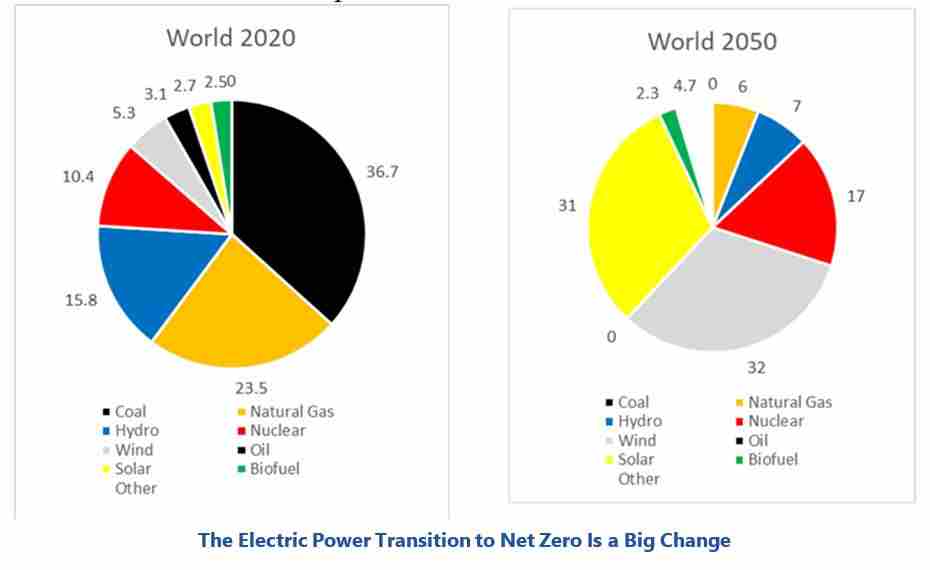Overview
The presentations at the ARC Forum in Orlando this past February provided insights into the economic and technical aspects of decarbonizing the generation of electric power and the production of fossil fuels. The energy transition requires that we electrify buildings, industry, and transportation and this puts a priority on decarbonizing the generation of electric power. While fossil fuel use must decline in the future, fossil fuels will remain a critical part of our energy infrastructure for many decades and reducing the greenhouse gases that result from making and delivering products like natural gas, gasoline, diesel, jet fuel, and fuel oil are an essential part of our decarbonization journey and already underway.
The key objective of the energy transition is to prevent global temperature rise from further damaging our environment, reduce the current dramatic loss rates of plant and animal species, and ensure that our human way of life can be sustained with a less polluting energy system. The two decarbonization forum sessions illustrated the scale of the problems that need to be solved and provided many examples of how solutions can unfold.
The CO2 in our atmosphere has increased by 50 percent since the start of the industrial revolution. Methane is two-and-a-half times greater than its pre-industrial levels. As TJ Conway, who co-leads RMI's Oil and Gas Solutions Initiative mentioned in his presentation, methane is 85 times more potent as a greenhouse gas than CO2 over a 20-year period.
Key Findings
- Decarbonization is a daunting problem to solve. Our way of life depends on energy for food, shelter, transportation, communications, and business in general. Fossil fuels cause damaging climate change and dependence on them must be reduced. Some progress has been made in this direction.
- Nuclear Energy may see a resurgence but not until after 2030, because new nuclear designs like SMR technology will not be operating until the late 2020s. Some new reactor designs have passive reactor cooling without the need for pumps. To connect to a grid with renewables, new nuclear reactors have energy storage features, like molten salt thermal energy storage, and options for making hydrogen. After the schedule and cost overruns of the Vogtle reactors in Georgia all eyes are watching to see if new reactors can be cost competitive in the future.
- Essential to decarbonizing is the need to understand where these emissions are. The EPA (Environmental Protection Agency) GHG (Green House Gas) reporting system (40 CFR part 98) requires the reporting of scope 1 and 2 emissions, and it is being revised often to improve the reporting accuracy. We can only manage what we can measure. New satellite imagery can localize methane leaks within a few meters. This and other measurement technologies are helping to improve the visibility of these emissions. The open source RMI (Rocky Mountain Institute) OCI+ tool https://ociplus.rmi.org/ provides models and databases which can provide a way to map carbon.
- By collecting and organizing appropriate real time and operational data, AI (Artificial Intelligence) and machine learning used with digital platforms can improve the operational efficiency of the upstream sector. This can reduce Scope 1, Scope 2, and Scope 3 emissions of our existing upstream assets.
- Low-cost wind and solar are now dominating new power generation, and this will continue over the next decade. Grid operators and utilities are hard at work to plan for a reliable and resilient grid while considering the characteristics of a changing mix of generation assets. Plans need to consider the generating assets that we will have 10 years from now and the new shifting demands for electric power such as the growth in EV’s and building heat pump systems. While the challenges of intermittent generation are significant, there are many ways to fill the gaps and keep power reliable. Some of these will involve more grid interactive power consumers.
Decarbonizing the Generation of Electric Power
Unfortunately, the world has made little progress on reducing the concentration of CO2 in the atmosphere as it continues to increase at an even faster rate since we recovered from COVID. We have known about this problem for 50 years, but progress is being held back by forces that prevent the needed policies. In the US over the past decade, we could see the reduction in coal was balanced by the increase in natural gas for power generation, yet we still have substantial coal powering our grid.

ARC Advisory Group clients can view the complete report at ARC Client Portal
If you would like to buy this report or obtain information about how to become a client, please Contact Us
Keywords: Decarbonization, Sustainability, Greenhouse Gases, Electric Power, Scope 3 Emissions, Fossil Fuel, CO2, Methane, Energy Transition, ARC Advisory Group.




